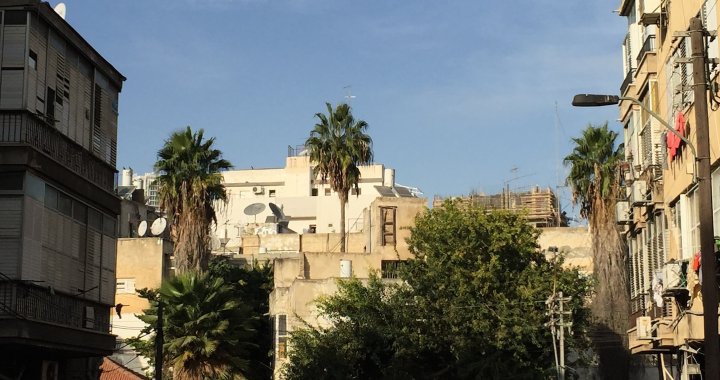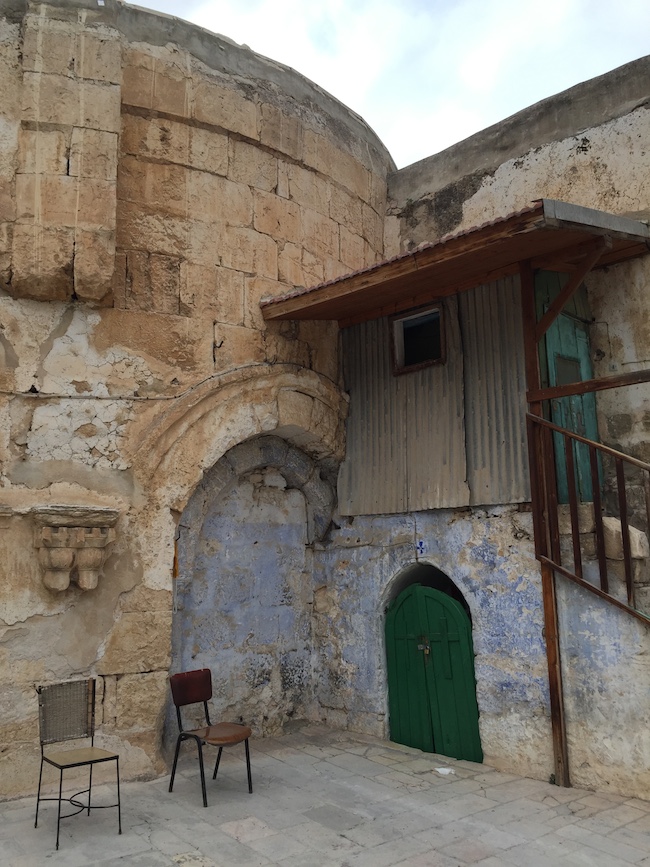
On Israeliness by Ruth Margalit
Ruth Margalit
26/09/2017
Photo: Roy Brand
From October 7 to November 6, at the new Zuzeum Art Center in Riga, an exhibition “Dreams and Dramas” will be hosted. Organized by the art and culture publishing house Arterritory.com - it will constitute the largest exhibition to date in the Baltic States of contemporary art from Israel. Curated by Roy Brand, an Israeli philosopher, curator, and lecturer at the Bezalel Academy of Arts and Design in Jerusalem, it will bring together works by fourteen distinguished Israeli artists: Porat Salomon, Dor Guez, Nir Hod, Guy Zagursky, Noa Eshkol, Avner Ben-Gal, Sagit Mezamer, Erez Israeli, Keren Yeala Golan, Marik Lechner, Daniel Kiczales, Eitan Ben-Moshe, Sigalit Landau, and Yehudit Sasportas.

There was many things I'd been prepared for when my son was born nine months ago. Sleepless nights. An almost crushing sense of responsibility. Moments of pure, unadulterated joy. What I hadn’t been prepared for, however, was the amount of singing I’d be doing. We live in Brooklyn, New York, but the lullabies I find myself singing to my son in the hushed, blue hours before dawn are the ones I remember from my own childhood, which is to say the ones I remember my mother singing to me in Hebrew, in our Jerusalem home. Israeli lullabies are dark and deeply patriotic. Strangely, they also seem ill suited for children. “A cry rises high / over the fields of the Jezreel Valley,” spookily goes one. Or another: “Night, night, heading toward you / Night, night, they rode armed.” Perhaps it’s no surprise that these songs should conjure menace and terror so vividly, as they were all written before or around the time of the country’s founding.
For my mother, these songs spoke of home—of a physical, tangible Israel, with vast expanses (those fields of the Jezreel Valley) and night winds and rustling cypresses. They always made her eyes glisten. Many of those images are long gone: the expanses (never really vast to begin with) are now dotted with construction cranes. The sense of lurking violence remains, but it is of a different order: No longer seen as a temporary condition, it now resembles life in the vicinity of an active volcano. To me these songs speak not so much of Israel as of a certain kind of “Israeliness”, not a physical place but more the idea of one. If Israel is the about-to-erupt volcano, Israeliness is the moments that transpire under the molten rocks. In an essay titled “On Not Going Home”, the critic James Wood writes: “To have a home is to become vulnerable. Not just to the attacks of others, but to our own adventures in alienation.” Adventures in alienation — the very essence of growing up. It is no accident, Wood adds, that Herodotus described the formidable Scythian army as having no settled cities or forts to protect, but rather as soldiers “carrying their dwellings on their backs”. Home makes you weak. It impresses upon you the heavy fingerprints of the past. And what of a home whose past is ever-present, as it is in Israel? What of a home that keeps changing beyond recognition? A home that angers and frustrates you even as your sense of who you are remains entirely wrapped up in it? What if, as Wood beautifully describes it, the homesickness one feels toward it isn’t merely sickness from but sickness of?
In a country that too often seems to rest on tectonic plates that are forever drifting apart, leaving unbridgeable chasms, this amorphous “Israeliness” is perhaps the only thing that still unites us Israelis. Israeliness, as opposed to Israel, knows no borders of geography, politics, religion, or gender. Whereas Israel is a flashpoint, a place where, as the poet Yehuda Amichai put it, “the right to vote is granted even to the dead,” Israeliness is the woman standing behind me in line at the post office who, unprompted, removes a stray hair from my shirt. It is the elderly man who jumps the same line by telling the clerk and the rest of our frowning faces, “Just a question!” It’s the mysterious hand that knows to turn up the volume on the radio when the news comes on, so that everyone in line can hear. And it’s the news anchor on the radio who reads out the names of two men who drowned at sea over the weekend, because, even though the country’s population has by now swelled to eight million, there is still a sense that we are, at heart, a small village.
Here is Amichai again: “What are we doing / In this dark land with its / Yellow shadows that pierce the eyes?” This is Israel: the dark lands, the scorching sun casting yellow shadows. But in the same poem he also conveys Israeliness: “What are we doing with these souls of mist, with these names / With our eyes of forests, with our beautiful children / With our quick blood?” There are echoes of the past—of the Holocaust, one senses, of which all that remains are “souls of mist” and, simply, “names”—as well as allusions to the present (that oh-so-familiar “quick blood”). In trying to elucidate to myself why I insist here on Israeliness—the attempt to create a semblance of normalcy while the lava builds— rather than on Israel, the place, I am put in mind of Streetwise, a charming podcast about Hebrew slang that I listen to on occasion.
A recent episode on the podcast pivoted on a single word: habayta. It means “home,” but not exactly. Bayit is the Hebrew word for house or home (tellingly, in Hebrew there is no distinction between the two). Habayta means, literally, “toward home”, or “homeward”. This tense ending is quite rare in Hebrew and is mostly archaic (we also say Yerushalayma, or “toward Jerusalem”). The sense of return is implicit—you can’t speak of heading homeward if you haven’t lived there to begin with. It also describes an action, a state of ongoingness, that is attempted but never quite reached. It isn’t home—a place of rest—but homeward, a more active state of longing and, perhaps, the impossibility of ever reaching your destination, which itself keeps drifting away. If Israel is bayit, then Israeliness is habayta: a longing, an aspiration, a perpetual state of unrest.
Israeliness is also something else, however. It is a culture that is firmly invested in the notion of place. I’d like to think that that is usually a good thing, in that it means being grounded, having an awareness of one’s surroundings. But it can have its blind spots, too. When one lives close to a metaphorical volcano—in our case the Israeli-Palestinian conflict—there is a sense in which everything tends to be viewed in relation to it. The small scale disappears, replaced by epic proportions. Such a value system is then imported to the arts, wherein Israeli (and, I dare say, Palestinian) artists are often called on to make their work “relevant” to the country’s social-political situation. This, in turn, can result in an artistic backlash, leading to an art that is purposely hermetic and disengaged. You can almost see Israeli artists nowadays laboring against the critics’ too-ready labels.
This zero-sum critique is applied not only domestically but internationally as well. A few years ago, the Norwegian author Karl Ove Knausgaard created a literary splash in Europe and the United States with his six-volume autobiographical novel My Struggle. Like everyone in my adopted country, it seemed, I was enthralled. Knausgaard’s language portrayed even the most banal events of the everyday—brushing one’s teeth, dropping kids off at school— with almost poetic clarity: deeply personal, titillating. But when his first volume came out in Hebrew the critics weren’t impressed. What Knausgaard had been lauded for everywhere else—the description of thought as it occurs, the emphasis on the personal and the quotidian—is, it seems to me, antithetical to Israeliness, which tends to see an individual in relation to the collective. His book “was written out of some kind of cultural-social vacuum,” one Israeli critic pounced. “We don’t feel Norwegian society at all.”
To “feel” society: that seems to be the often-unreasonable expectation of the Israeli critical establishment. We ask that Israeli writers and artists “represent”, that they speak for us all. It is no wonder, perhaps, that a society so tightly wound, where even children’s songs are charged with national pathos, should make artistic judgments based on a work’s social and political pronouncements. Such an endeavor, though, is doomed from the start. Art that is effective doesn’t speak; it whispers. Best we can do is lean in and listen.
